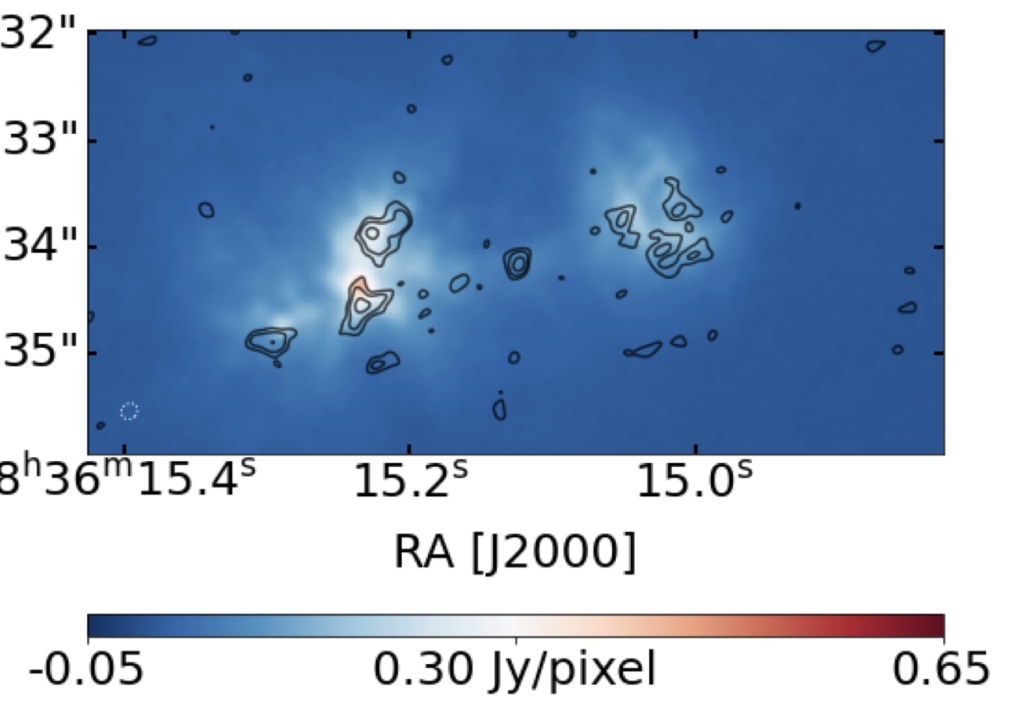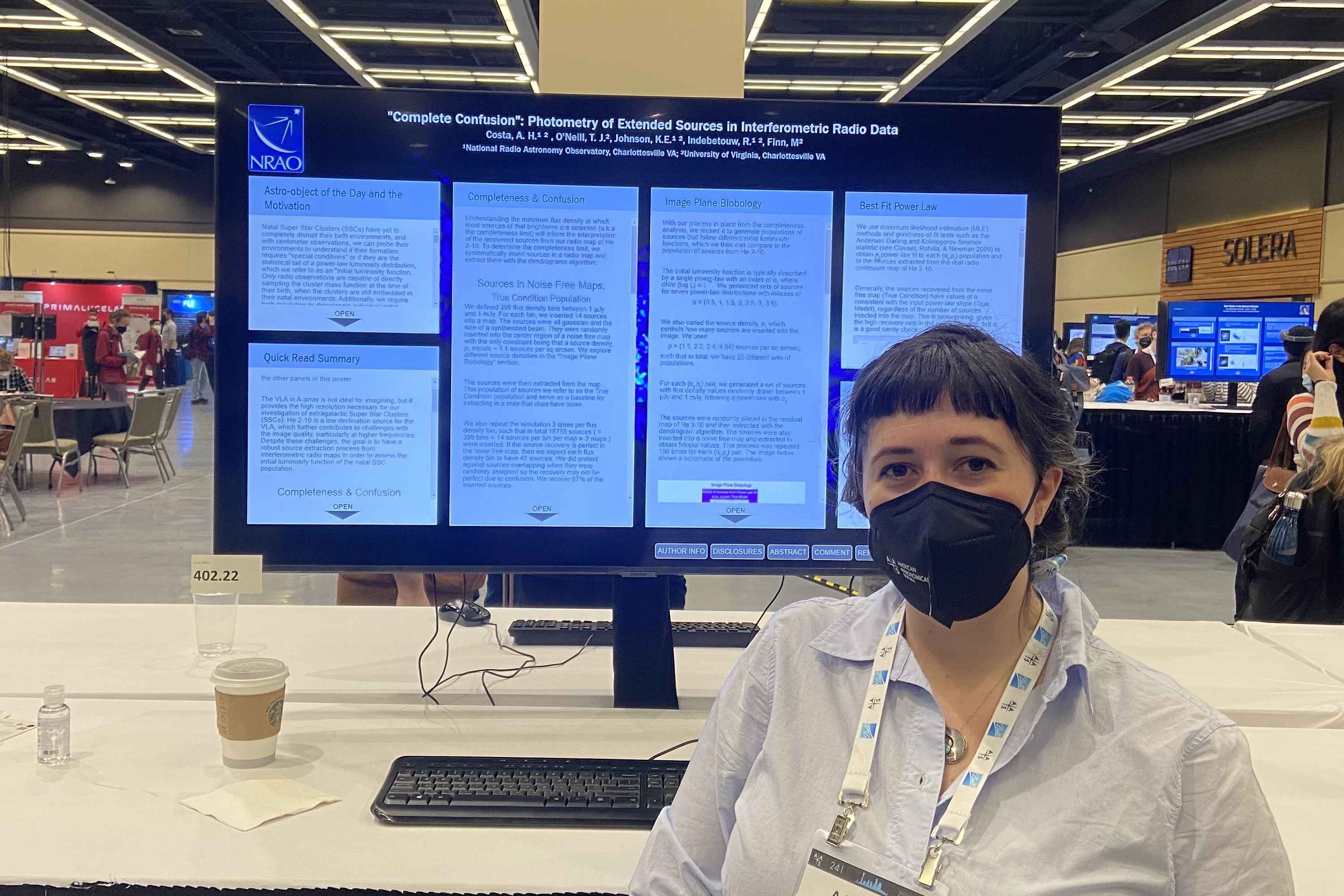Super Star Clusters (SSCs) are dense clusters of bright young stars. As they evolve their intense radiation can clear gas and dust from their region. But as they are forming the region around them is still undisturbed. Because of dense gas and dust surrounding them, only radio observations can detect these Natal Super Star Clusters. But how do astronomers know that a signal in their data is a natal star cluster and not something else?

To answer this question, Allison Costa, Assistant Scientist at NRAO, is working on a method to better extract their signal from the noise. Together with her colleagues, Allison created simulated images of Super Star Clusters and integrated them into real background radio signals from the Very Large Array (VLA). The simulated signals followed a power law distribution, where larger stars are less common than smaller ones. Allison then analyzed the synthetic images to see if her method could extract the signal. The result produced a power law distribution of clusters, demonstrating the method can work.
In future work, Allison and her colleagues plan to integrate simulated cluster signals into raw background data and try extracting the signals. This is a more involved and time-consuming process but should show just how well the approach can work. In time, her team will be able to confirm natal SSCs within radio observations and learn more about the origins of these unusual star clusters.
Allison presented these results at AAS 241.






